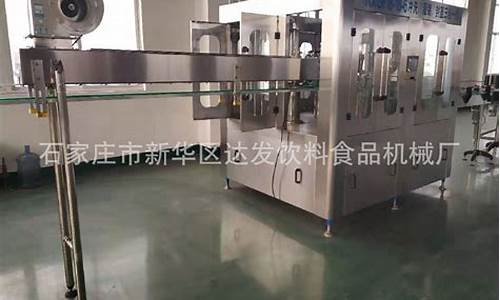Herbal tea has gained substantial popularity worldwide due to its diverse health benefits and refreshing taste. As the market continues to expand, advancements in filling technology are becoming increasingly crucial. This article explores the latest innovations in herbal tea filling technology, examining their impact on the industry and their potential to drive future growth.
Emergence of Advanced Filling Technologies
In recent years, the herbal tea industry has witnessed significant technological advancements in filling processes. Traditional methods, while effective, have been largely replaced by more sophisticated technologies that offer improved efficiency and precision. Innovations such as automated filling systems, high-speed fillers, and aseptic filling technologies have revolutionized the industry. Automated systems, for instance, not only increase production rates but also enhance consistency and reduce the risk of contamination.
One notable advancement is the integration of robotics into the filling process. Robotic systems can handle delicate herbal blends with precision, ensuring that the quality of the tea is maintained. These systems are also designed to be highly adaptable, allowing manufacturers to easily switch between different types of herbal teas without extensive downtime.

Another significant development is the use of smart technology in filling machines. Smart sensors and data analytics are now being employed to monitor the filling process in real-time. This enables manufacturers to quickly identify and rectify any issues that may arise, thereby improving the overall efficiency of production. Furthermore, these technologies facilitate the collection of valuable data that can be used to optimize processes and improve product quality.
Benefits of Innovations in Herbal Tea Filling Technology
The innovations in herbal tea filling technology offer numerous benefits that extend beyond mere efficiency. One of the primary advantages is the enhancement of product quality. Advanced filling technologies ensure that herbal teas are filled with a high degree of accuracy, which helps to maintain the integrity and flavor of the product. This is particularly important for premium herbal teas where consistency and quality are key factors in consumer satisfaction.
Moreover, the reduction in manual labor and human error is another significant benefit. Automated systems and robotics minimize the need for manual intervention, which not only speeds up the production process but also reduces the likelihood of errors. This leads to a more reliable and cost-effective manufacturing process.
Environmental sustainability is also a major benefit of modern filling technologies. Many of the new systems are designed with eco-friendly practices in mind. For example, some technologies focus on reducing waste and optimizing resource use, which helps to lessen the environmental impact of production. This aligns with the growing consumer demand for sustainable and environmentally friendly products.
Future Trends and Challenges
Looking ahead, several trends are likely to shape the future of herbal tea filling technology. One trend is the continued development of smart and connected machines. The integration of Internet of Things (IoT) technology into filling systems is expected to provide even greater levels of automation and data analysis. This will further enhance the efficiency of the production process and enable manufacturers to make more informed decisions.
Another trend is the focus on customization and personalization. As consumers increasingly seek products tailored to their specific tastes and preferences, filling technology will need to evolve to accommodate these demands. This may involve the development of more flexible and versatile filling systems that can handle a wide range of herbal tea formulations.
However, there are also challenges that need to be addressed. The initial investment in advanced filling technologies can be substantial, which may be a barrier for some manufacturers. Additionally, there is a need for continuous research and development to keep pace with technological advancements and evolving consumer preferences.
In conclusion, the innovations in herbal tea filling technology are transforming the industry by enhancing efficiency, improving product quality, and promoting sustainability. As technology continues to advance, it will be crucial for manufacturers to stay abreast of the latest developments and trends. Embracing these innovations will not only drive growth in the herbal tea market but also help meet the growing demands of consumers for high-quality, sustainable products. The future of herbal tea filling technology holds exciting possibilities, and those who adapt to these changes will likely lead the way in the industry.






























